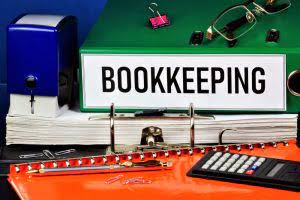
If the company was using the straight-line depreciation method, the annual depreciation recorded would remain fixed at $4 million each period. Suppose you purchase an asset for your business for $575,000 and you expect it to have a life of 10 years with a final salvage value of $5,000. You also want less than 200% of the straight-line depreciation (double-declining) at 150% or a factor of 1.5. Goodwill amortization is when the cost of the goodwill of the company is expensed over a specific period.

Certain fixed assets are most useful during their initial years and then wane in productivity over time, so the asset’s utility is consumed at a more rapid rate during the earlier phases of its useful life. An asset for a business cost $1,750,000, will have a life of 10 years and the salvage value at the end of 10 years will be $10,000. You calculate 200% of the straight-line depreciation, or a factor of 2, and multiply that value by the book value at the beginning of the period to find https://www.bookstime.com/ the depreciation expense for that period. With your second year of depreciation totaling $6,720, that leaves a book value of $10,080, which will be used when calculating your third year of depreciation. The following table illustrates double declining depreciation totals for the truck. While some accounting software applications have fixed asset and depreciation management capability, you’ll likely have to manually record a depreciation journal entry into your software application.
What is amortization in accounting?
For instance, the original book value of an asset was $112,000, the year-end book value of the same asset will decrease due to depreciation. Under a 40% DDB depreciation rate, the book value of the same asset two years later would only be $40,320. In this way, the company is not only saving more money, but those deductions also correlate with how rapidly the asset will decline. After all, adding thousands of miles to a delivery truck in its early years will cause it to deteriorate in value quickly. Unlike straight-line depreciation, which dictates that an asset will experience the same amount of depreciation over the course of its lifetime, DDB depreciation will cause the asset to depreciate twice as quickly. Just because you may need to calculate your depreciation amount manually each year doesn’t mean you can change methods.
- You also want less than 200% of the straight-line depreciation (double-declining) at 150% or a factor of 1.5.
- For reporting purposes, accelerated depreciation results in the recognition of a greater depreciation expense in the initial years, which directly causes early-period profit margins to decline.
- For example, computer equipment can depreciate quickly because of rapid advancements in technology.
- In simple terms, Book value is the cost you paid while purchasing the asset.
- There are several steps to follow when calculating amortization for intangible assets.
- Amortization is usually conducted on a straight-line basis over a 10-year period, as directed by the accounting standards.
- The Double Declining Balance Method (DDB) is a form of accelerated depreciation in which the annual depreciation expense is greater during the earlier stages of the fixed asset’s useful life.
If you’re using the wrong credit or debit card, it could be costing you serious money. Our experts love this top pick, which features a 0% intro APR for 15 months, an insane cash back rate of up to 5%, double declining balance method and all somehow for no annual fee. Updated in line with the Tax Cuts and Jobs Act, the Quickfinder Small Business Handbook is the tax reference no small business or accountant should be without.
#2. Declining balance method
Depreciation is charged on the opening book value of the asset in the case of this method. Double declining balance depreciation allows for higher depreciation expenses in early years and lower expenses as an asset nears the end of its life. Let’s assume that a retailer purchases fixtures on January 1 at a cost of $100,000. It is expected that the fixtures will have no salvage value at the end of their useful life of 10 years.
- The double declining method is an alternative calculation to the straight-line method, which tracks the same amount of loss each year.
- Some companies use accelerated depreciation methods to defer their tax obligations into future years.
- The best way to understand how it works is to use your own numbers and try building the schedule yourself.
- For instance, borrowers must be financially prepared for the large amount due at the end of a balloon loan tenure, and a balloon payment loan can be hard to refinance.
- The double-declining method of depreciation accounting is one of the most useful and interesting concepts nowadays.
- For tax purposes, only prescribed methods by the regional tax authority is allowed.
- Generally speaking, DDB depreciation rates can be 150%, 200%, or 250% of straight-line depreciation.
Of course, the pace at which the depreciation expense is recognized under accelerated depreciation methods declines over time. Double declining balance (DDB) depreciation is an accelerated depreciation method. DDB depreciates the asset value at twice the rate of straight line depreciation. Depreciation is an accounting process by which a company allocates an asset’s cost throughout its useful life. Firms depreciate assets on their financial statements and for tax purposes in order to better match an asset’s productivity in use to its costs of operation over time. On the balance sheet, as a contra account, will be the accumulated amortization account.
The Double Declining Balance Depreciation Method Formula
For instance, businesses must check for goodwill impairment, which can be triggered by both internal and external factors. The goodwill impairment test is an annual test performed to weed out worthless goodwill. Many intangibles are amortized under Section 197 of the Internal Revenue Code. This means, for tax purposes, companies need to apply a 15-year useful life when calculating amortization for “section 197 intangibles,” according the to the IRS. A business client develops a product it intends to sell and purchases a patent for the invention for $100,000.
This is unlike the straight-line depreciation method, which spreads the cost evenly over the life of an asset. The double-declining balance depreciation (DDB) method, also known as the reducing balance method, is one of two common methods a business uses to account for the expense of a long-lived asset. Similarly, compared to the standard declining balance method, the double-declining method depreciates assets twice as quickly. The double declining balance method of depreciation, also known as the 200% declining balance method of depreciation, is a form of accelerated depreciation. This means that compared to the straight-line method, the depreciation expense will be faster in the early years of the asset’s life but slower in the later years. However, the total amount of depreciation expense during the life of the assets will be the same.
Double Declining Balance Method
We can understand this by illustrating the case of a company that identifies huge profits on asset sales. Using this, the company experiences lower net income for many years, but as the book value of the asset is lower than market value, the company achieves a larger profit when the asset is sold. Double Declining Balance or DDB refers to the accelerated method of calculating depreciation in which asset value gets depreciated at twice the rate as that in the straight-line method. Owing to an increased rate of depreciation, it is termed accelerated depreciation. In business, companies purchase equipment or physical assets that have a valuable life or a useful life. In this period of useful life, the asset’s value decreases due to various reasons.
How Do I Calculate Fixed Asset Depreciation Using Excel? – Investopedia
How Do I Calculate Fixed Asset Depreciation Using Excel?.
Posted: Sat, 25 Mar 2017 18:22:58 GMT [source]
The double declining balance depreciation method is a form of accelerated depreciation that doubles the regular depreciation approach. It is frequently used to depreciate fixed assets more heavily in the early years, which allows the company to defer income taxes to later years. Accelerated depreciation is any method of depreciation used for accounting or income tax purposes that allows greater depreciation expenses in the early years of the life of an asset. Accelerated depreciation methods, such as double declining balance (DDB), means there will be higher depreciation expenses in the first few years and lower expenses as the asset ages.
Your employees can view their payslips, apply for time off, and file their claims and expenses online. Additionally, you may need to pay more taxes in the later years because this method allows for greater tax deductions in the short run. Instead of deducting the same amount on your taxes annually (with straight-line depreciation), you will report lower and lower depreciation amounts with each passing year. The book value refers to the amount that you have already factored in for depreciation in your books. Each year, the book value should decrease because you continue to write off amounts for depreciation and factor them into the value of your assets.
- The best reason to use double declining balance depreciation is when you purchase assets that depreciate faster in the early years.
- Finally, you will need to use straight-line depreciation to calculate DDB, and you will need to use it when your item has no value.
- He is a CFA charterholder as well as holding FINRA Series 7, 55 & 63 licenses.
- For example, last year, the actual depreciation expense, as per the depreciation rate, should have been $13,422 but kept at $12,108.86 to keep the asset at its estimated salvage value.
- This formula works for each year you are depreciating an asset, except for the last year of an asset’s useful life.
Then, we need to calculate the depreciation rate, explained under the next heading. In the next step, we need to multiply the beginning book value by twice the depreciation rate and deduct the depreciation expense from the beginning value to arrive at the remaining value. We will repeat a similar process each year throughout the asset’s useful life or until we reach the asset’s salvage value.
Companies have a lot of assets and calculating the value of those assets can get complex. Deskera is an all-in-one software that can overall help with your business to bring in more leads, manage customers and generate more revenue. With Deksera CRM you can manage contact and deal management, sales pipelines, email campaigns, customer support, etc. You can generate leads for your business by creating email campaigns and view performance with detailed analytics on open rates and click-through rates (CTR).


